Ryan Hall's Blog, page 206
October 27, 2016
Chicago Versus Cleveland for Runners
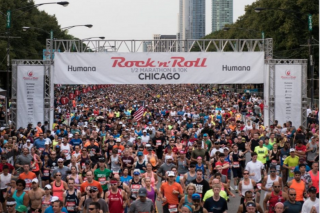
The 2017 Rock 'n' Roll Chicago Half Marathon, 10K and 5K are scheduled for July 15-16. Photo: PhotoRun.net
Major League Baseball’s World Series is underway, with much being made of the fact that both teams are hoping to break epic streaks without winning baseball’s biggest title. If the Cleveland Indians prevail it will be their first World Series win since 1948, while the Chicago Cubs haven’t been called the best team in baseball since 1908.
To put that in running terms, consider that American marathoners have won three Olympic gold medals (Johnny Hayes in 1908, Frank Shorter in 1972 and Joan Benoit in 1984) since the Cubbies last won a World Series. When the Tribe took the 1948 title, the New York Road Runners club was still 10 years from forming and the first Chicago Marathon would not be held for more than three decades. Heck, several waves of the running boom have happened since Hall of Fame players Bob Feller, Lou Boudreau, Ernie Banks and Billy Williams were in their prime. (Boudreau, who was the AL MVP of the 1948 season when the Indians last won it all, was a native of Chicago’s south suburbs and a long-time Cubs broadcaster.)
A lot of dirty water has flowed through the Cuyahoga and Chicago Rivers (and maybe some sour grapes too) since Cubs or Indians fans could call their teams baseball champions. But which city is tops for runners? Competitor contributing editor Mark Eller and editor-in-chief Brian Metzler make a case for cities where they each have ties.
Cleveland Running Rocks
I’ve never lived in Cleveland, but my grandfather was a fire department chief there, my father grew up watching the Indians play and my cousin Pat ran track at Westlake HS. I know that Chicago has more runners, an internationally known marathon and a waterfront running path, but I feel confident in saying that Cleveland’s running scene surpasses it.
If that claim seems outrageous, consider that one of Cleveland’s most prized assets is the “Emerald Necklace,” the intertwined system of Cleveland Metroparks properties that feature hundreds of miles of well-maintained footpaths, bridal trails and other runner-friendly options. Cuyahoga Valley National Park lies just south of the city and offers gorgeous trails, along with options for more technical surfaces running on singletrack trails.
The vibe of the Cleveland running scene is low key, but not low performance. Plenty of top-level runners have emerged there, as evidenced by this account from the locally produced Salty Runner blog. “Esther Atkins was perhaps the biggest running star Case Western Reserve University ever produced,” Salty writes. “Heidi Greenwood lived and trained for a few years here while her husband did his residency at the Cleveland Clinic. Nicole Camp is from a small town outside of Cleveland and moved closer to the city after college to train and work for a few years before joining Hudson Elite in Colorado, even qualifying for her first Olympic Trials at the 2011 Rite Aid Cleveland Marathon.”
Speaking of the city’s biggest race, while the Cleveland Marathon isn’t as well known as Chicago’s signature event, it’s 40-year history makes it one of the 50 oldest marathons in the country. The field of 30,000 is nothing to sneeze at, and it’s one of the friendliest, best-organized events you’ll ever run. Cleveland also has scads of great running stores and running clubs, including the Cleveland Elite Development squad. Better yet, all of these advantages are delivered with Clevelanders’ characteristic friendly attitudes and charm.
RELATED: 54 Spring Races to Sign Up for (Includes the Cleveland Marathon)
Chicago is My Kind of Town
Chicago (and its outlying suburbs) is one of the best places to run anywhere in the world.
OK, I grew up in the western suburbs of Chicago, have gone to hundreds of Cubs games at Wrigley Field (including Game 1 of this year’s NLDS) and ran high school track in the area (often against the national powerhouse York HS in Elmhurst). While my dreams of becoming the next Jim Spivey (a three-time Olympian who went to Fenton HS in Bensenville, Ill.) never panned out in college, I did run a couple of meets that the Chicago Track Club (UCTC) put on and I have logged many long runs along the city lakefront, on the Illinois Prairie Path, Waterfall Glen trail system near Darien and the amazing forest preserve parks throughout Cook and DuPage counties.
The Chicago area has produced dozens of great top-tier runners, including Evan Jager (a Jacobs HS grad who won the silver medal in the 3,000m steeplechase at the Rio Olympics), Greg Foster (a three-time world champion hurdler and Proviso East HS grad), Rick Wohlhuter (a St. Charles, Ill. native and University of Chicago Track Club member who won the 1976 Olympic bronze medalist in the 880m run) and Jenny Spangler (a longtime Gurnee, Ill., resident who won the 1996 U.S. Olympic Trials Marathon and had a great career as a masters runner). Plus, three Chicago-area running shops are often among the 50 Best Running Stores in America (Fleet Feet Chicago, Dick Pond Athletics and the Naperville Running Company, the latter of which is a two-time winner of the Running Store of the Year award.)
But what makes the Chicago area a great place for running is the enormous running community and the great places—and races!—to run. The Chicago Marathon, which celebrates its 40th year in 2017, is one of the six World Marathon Majors and perennially an amazing spectacle of local citizens running fast times, raising money for charity and/or just finishing. For Cubs fans, the Chicago Cubs Race to Wrigley 5K (late April) has become an annual rite of passage in the spring as it starts and finishes just a few blocks from Wrigley Field and actually passes through a portion of the stadium. The Soldier Field 10 Mile (late May), Shamrock Shuffle 8K (early April) and the Rock ‘n’ Roll Chicago Half Marathon, 10K and 5K (mid-July).
Like Cleveland, the weather can be harsh (hot and muggy in the summer and freeze-your-face-off cold in the winter) but the people are friendly and a post-run beer is never hard to find. There’s a lot to do in the Chicago area, but running is part of the fabric of life for quite a few people.
RELATED: 5 Great Places to Run in Chicago
The post Chicago Versus Cleveland for Runners appeared first on Competitor.com.
October 26, 2016
7 Injury Prevention Strategies for Pain-Free Running
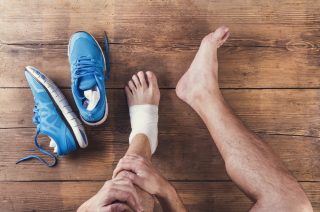
Photo: Shutterstock.com
Running is a full-contact sport—every stride inevitably leads to a brutally forceful impact with the ground. Not surprisingly, runners get injured at fairly high rates. In fact, multiple surveys have revealed that it’s much less common for a given runner to enjoy an injury-free year than it is to experience at least one ding that requires time off from training.
Sure, there are many great options for cross training that runners can utilize—but if we wanted to be swimmers, Nordic skiers or cyclists we’d switch to those sports and spare ourselves all the pounding that running inflicts.
So, how can you join the ranks of the minority of runners that escape injuries for extended periods of time? Here are seven effective strategies to help keep you off the couch.
1. Stop overstriding
When your footsteps consistently land in front of your center of mass you’re in danger of overstriding. This leads to increased forces on your legs that can even carry through the chain of muscle and bone that leads to your upper body. The best way to figure out if overstriding is an issue is to work with a professional running coach, but you can also get to work on cleaning up your stride with a few do-it-yourself remedies.
RELATED: The Dangers of Overstriding—and How to Stop It
2. Commit to a warmup
Most of us advise newer runners to perform a good warmup before a run or race—but too often it’s a “Do as I say, not as I do” proposition. Even a short warmup, perhaps a few leg swings and some lunges, is far better than none at all. Once you get into the habit of it you’ll notice how strange it feels to begin a run without preparing your muscles first.
RELATED: The Best Way to Warm Up
3. Run on a variety of surfaces
Surprisingly, the advice here is not to run exclusively on soft surfaces like dirt and grass. While those are great for reducing impact on your feet, research shows that the body adjusts to the impacts of different surfaces, so alternating between harder and softer terrain may do more to keep your running, and your legs, fresh.
RELATED: How Running Surfaces and Speed Influences Your Risk of Injury
4. Increase weekly miles strategically
The best single predictor of running performance is weekly mileage—study after study indicates that faster runners tend to run more miles. But how do you reach a higher mileage total without getting injured, since high miles is also closely linked to injury rates? The often-touted guideline of adding no more than 10 percent more miles from one week to the next is a starting point, but here’s a more strategic approach.
RELATED: A Smarter Way to Increase Running Mileage
5. Work on stride mechanics
A recent study from researchers at Harvard University followed 249 runners for more than two years to examine their injury rates and how those rates related to stride mechanics. Sure enough, the runners with better biomechanics experienced far fewer setbacks due to injuries. One simple piece of advice the researchers pointed to was to simply listen to your footsteps—the quieter the better.
RELATED: Footstrike 101: How Should Your Foot Hit the Ground?
6. Know when to back off
Runners are typically big on the value of “good work ethic” and “putting your nose to the grindstone.” That dedication is a big part of running’s appeal, but it can also be a recipe for disaster. Push your body too hard, too often and you will inevitably succumb to overtraining, which, almost by definition, puts you at risk of an injury.
RELATED: 4 Ways to Avoid Overtraining
7. Stay informed
Unfortunately, we have barely scratched the surface of the injuries and the strategies for overcoming them, that runners may need to know. If only there was a convenient way to research the causes and cures for dozens of running maladies, with searchable results and new information constantly being added. Hurray! Just such a resource does exist. Find it by visiting the Injury Prevention section of Competitor.com.
The post 7 Injury Prevention Strategies for Pain-Free Running appeared first on Competitor.com.
Celebrity Chef Richard Blais Fired Up for 4th NYC Marathon
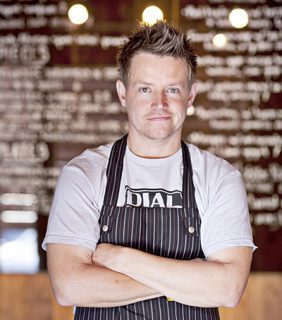
Chef, restaurateur and cookbook author Richard Blais is ready to run the New York City Marathon on Nov. 6.
Some athletes eat to run, others run to eat. Celebrity chef Richard Blais, who turned to running to help lose more than 60 pounds and win over a crush, now his wife, tries to balance the two philosophies. The 44-year-old restaurateur, cookbook author and winner of Top Chef All-Stars is always on the go, traveling the world, trying new foods and making regular appearances as host and judge on cooking shows. And the first thing he does when he lands is lace up to go for a run.
“I go for a run in whatever city I’m in, and I used to go back to my hotel and order enough room service for three people. At one point I definitely ran to eat,” says Blais, who owns a 4:24 marathon PR. “Now I think of food as delicious fuel.”
He lives in San Diego with his family, but Blais is a native New Yorker, and he’s heading back this November to run the New York City Marathon. It’s his fourth time toeing the line in Staten Island, and he’s running on the charity team for Save the Children.
RELATED: Celebrities Running the 2016 New York City Marathon
“I grew up watching the marathon on television, eating way too many sausage biscuits while watching other people run fast,” he says. “There’s just something special about this race. It’s the fall, the holidays are coming and it’s just a nostalgic time for me.”
Nostalgia aside, the challenge of balancing family, work, travel and running is as real for Blais as it is for anyone. He says there are a lot of “almost dropped balls while you’re juggling and trying to keep everything going.” Family comes first for the chef, with running further down the list.
“It’s really just jamming miles in whenever I can to stay fit, especially when I have a race on the ledger,” says Blais, who credits running with giving him the freedom to do his job as a chef, and maybe eat two servings of mashed potatoes on occasion. “A big challenge for me is mental, especially on the business side. The idea that emails are stockpiling while I’m out running for two or three hours can be challenging for sure.”
Living in Southern California, Blais has gotten into “running in the wild,” and is enjoying the trail running scene. But when asked about his favorite place to run, he shared that it depends on the moment, saying, “Sometimes you just have those runs that click.”
As for great running cities, Blais has three, and New York is at the top of his list. Besides the marathon course, he says a loop around Central Park as a must-do for any runner. Chicago is another place he loves due to being able to run on Lake Michigan with the cityscape next to you. And Cincinnati is a sleeper favorite, he says.
“I love it, there are so many bridges and I’m all about goals like ‘I want to run in two different states today’,” says Blais who would like to run with other chefs, as long as they aren’t faster than him.
Blais, infamous for his use of liquid nitrogen in cooking, has yet to try cryotherapy for run recovery. However, living in SoCal, he sees it as a way to bridge the worlds of “weird, science food” and athletes.
“I’m really interested in it as a business model,” says Blais who has been working with liquid nitrogen for 12 years. “Anyone who wants to talk about a Richard Blais Cryotherapy Center business plan, I’m open to it. Then we could serve liquid nitrogen acai bowls afterwards!”
RELATED: 36 Celebrities (And Other Notable People) Who Run
“Quick Fire” Questions
Bucket list races: “I would love to do some international running, maybe international races and get out into the woods for some trail races as well. We’ll see how this race goes!”
Thoughts on gels and chews: “I love the idea of whole, organic food on a run, like shoving a whole-wheat tortilla in my shorts and eating it as I go. But the reality is that doesn’t work so well. So, I eat plain gels. Artificial flavors irritate me.”
What if you could create your very own gel flavor: “It would be a healthy, Californian, Mexican gel flavor packet. I should get on that.”
Must-have gear: “As long as I’m dressed legally and am wearing sneakers, I’m good. I like to get rid of things as I go as a reward to myself. I wear things I can get rid of on purpose, and at the end of a race it’s absolutely as minimal as you can get.”
Favorite running shoes: “I’m running in New Balance right now. I did a show, Cooking with Team USA, before the Olympics. Emma Coburn introduced me to some of her friends and they hooked me up with gear.”
Pre-race food for New York City Marathon: “Whole Foods salad bar, I like to keep it super simple now. I’ve had amazing food the night before, but you don’t want to be burping up barbecued octopus at mile 17.”
Post-race debauchery: “Afterwards I do sort of reward myself. It will be a 48-ounce steak or a couple cheeseburgers or a whole pizza pie, something like that.”
Running goal: “I would love to race in a costume. If I could ever get to the point where I could find two people dressed like storm troopers to run a marathon or half marathon with me that would be pretty cool. I could see what it was like to run in Darth Vader’s shoes, well probably not his actual shoes since I’d be running, but you know what I mean.”
The post Celebrity Chef Richard Blais Fired Up for 4th NYC Marathon appeared first on Competitor.com.
Shoe of the Week: Karhu Fluid5 MRE
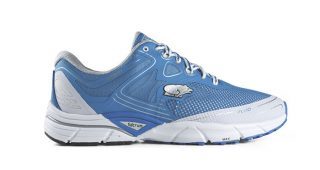
Karhu is a 100-year-old Finnish footwear company that has a long legacy in running shoes. In keeping with its Fulcrum technology—a design that incorporates a wedge of firmer material to help propel the foot as it moves through the gait cycle—Karhu’s Fluid5 MRE is all about an efficient roll-through to boost propulsion with different foam densities, using a firmer material in the rear and mid-foot and combining that with a cradling rail guard to dampen shock. (The “MRE” in the name of the shoe stands for Maximum Rolling Effect.) The half-length Fulcrum piece allows for a more pronounced transition from the mid to the forefoot. These snazzy Finnish fliers are relatively light in weight, considering the generous amount of support and protection they offer. (It’s a mostly neutral-oriented shoe, but its chassis does provide a decent amount of inherent support.)
The newly-designed Fluid5 features a modified lacing system to allow for more air flow through vented windows that are secured by way of the welded seamless upper. The forefoot was designed to avoid overlays that irritate bunions and pressure on the metatarsal heads. All of this comes together for a fine cruiser that is best suited for training runs, when comfort and support are more important than pure, barren speed. The Fluid5 is a workhorse that accommodates heavy runners and those logging hefty base miles.
This is the shoe for you if … you’re looking for a durable, well-cushioned high-mileage trainer for half marathon and marathon training.
Price: $130
Weights: 10.5 oz. (men’s), 8.9 oz. (women’s)
Heel-Toe Offset: 8mm; 20mm (heel), 12mm (forefoot)
Info: karhu.com
RELATED: Shoe of the Week—Hoka One One Clifton 3
The post Shoe of the Week: Karhu Fluid5 MRE appeared first on Competitor.com.
October 25, 2016
Champion Trail Runner Dave Mackey Decides to Amputate Injured Left Leg
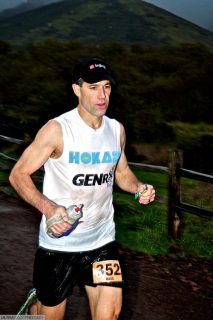
Dave Mackey, en route to a 15th-place finish at The North Face 50 in 2012. Photo: Courtesy of Dave Mackey
Champion trail runner Dave Mackey posted some dramatic news today on his Facebook page about his long recovery from his well-documented trail running accident in May 2015. After more than 16 months of surgeries, physical therapy and continued complications, the 46-year-old trail runner announced that he’s decided to have his lower left leg amputated below the knee.
During what was expected to be a routine trail run in the mountains that frame the western edge of Boulder, Colo., Mackey fell off a rock and tumbled more than 20 feet, badly breaking his left leg in the process. After seven surgeries during a three-week hospital stay, Mackey returned home with his injured leg intact, albeit with an external bracing system and crutches to help him get around. Although he recovered enough to walk with a significant limp over the next year, he still had mobility issues, internal infections and constant pain.
Several more surgeries—including his most recent procedure about three months ago—helped him walk without a cane. But continued complications with the repaired leg put him in the tough place of opting for more surgeries or permanently amputating his lower left leg. He talked through the scenarios with numerous doctors, as well as family and friends, and decided that he will have the amputation surgery on Nov. 1.
RELATED: Mackey Enduring Long Road to Recovery
Mackey, a Hoka-sponsored runner who works as a physician assistant, has won U.S. trail running championships for 50K, 50 miles and 100K distance and won the Montrail Cup trail running series in 2004 and 2011. He’s a two-time U.S. ultrarunner of the year with a long list of trail running and adventure racing victories, plus a handful of records and fastest known times to his credit. In 2007, he became the first trail runner to run under 7 hours for the famous rim-to-rim-to-rim trail run across the Grand Canyon and back when he ran the 42-mile route in 6:59:56 in 2011.
Although he’s has been able to ride a bike for more than a year, he hasn’t been able to run, let alone walk without a significant limp. He said on Monday that he’s most interested in regaining his health and being pain-free, and believes once he has a prosthetic, he’ll be able to resume life as it was before his accident. If all goes as planned, he will be able to run, ski and walk his kids to school without pain.
“I’m happy, or maybe relieved, to know there will be some finality to it,” Mackey told Competitor.com on Tuesday. “I’ve talked to a lot of people and I think this is the best next step for me.”
Here is Mackey’s post in it’s entirety:
“It’s been a long 16 months since I fell off Bear Peak above my house, sustaining an open tibial/fibula fracture to my left leg. The long rescue followed, 13 surgeries, including skin, muscle and bone grafting, washouts of the open-fracture contaminated surgical sites, being in an external-fixator (think “iron lung”, only on the outside of the leg) for three months, and bone infection (which still resides). I have achieved a degree of success in mobility and some improvement. I went from not walking at all, to walking with a cane until this past July, to walking cane-free now. Running has not been an option in the least just yet. Riding a mountain bike most every day now is almost real freedom. But there is still pain whenever I walk and throbbing at night, and now intramedullary nail (a rod) is wobbling and the bone grafting at the middle if the fracture sight is not dense.
“So I am at a crossroads. Do I continue with more surgeries with very high likelihood of failure? More time in a hellish external fixator? And even then there would always be pain.
“But there is another solution, the definite, non-reversible one, to be 100 percent to where I was before the accident and almost completely pain-free. There is a way to get here and I’ve decided to go this route. This would mean the freedom, if I choose it, to walk the kids to school without a thought, ski, run in 6-8 weeks, compete in races again, even take down Mike Wardian’s treadmill world record (okay, this will NOT happen). So the big news is that next week I will have my left leg amputated below the left knee here in Boulder.
“I’ve spoken extensively with orthopedic surgeons and other healthcare professionals and co-workers about my options. And there are other surgical options than amputation, but the chances of success are slim, and it feels time to move on. Being below the knee, this is a ‘good’ amputation to have. The technology of prosthetics is incredible these days, and improving, so I will be out in the mountains as before with my family and friends, to completing or competing in events again, having the ability to run any distance.
“There will likely be some sort of party on October 31 (how appropriate!) in Boulder… so come and join if you are around! TBA. Thank you to all those who have supported me through this process, there are 100’s of folks to recognize, and to Hoka One One for sticking by me.”
The trail running community responded to his post with immediate support. Here is just a brief sampling of the comments tied to Mackey’s Facebook post:
“Oh, gosh. I can hardly imagine what Dave Mackey has gone through the past year-plus,” said Joe Uhan, a trail runner from Eugene, Ore.. “He’s a tremendous role model for me—as a runner, medical professional, and man. It pains me through-and-through to think about what he’s gone through—and what he’s about to commit to. Best wishes to him. Let’s all go out and have a hell of a run (albeit a safe one) for Dave today!!”
“Courage. Heartbreak. Resilience and grit. Enlightenment. How does one begin to describe Dave Mackey’s odyssey? I’m in awe of him as a person and athlete, and wish him all the best,” said Sarah Lavender Smith, a trail runner from Piedmont, Calif. “I will run with more gratitude for health and for my two strong legs than ever before. Going on a run right now for Dave.”
“It’s hard not to draw inspiration from Dave,” said Ethan Veneklasen, a trail runner and sports marketing agent from Castro Valley, Calif. “He’s a tough guy, a tenacious competitor, and a super decent human being. While I am sorry that his injuries have left him no better alternative, I am excited about the prospect of seeing him back out at races one day … I’m pretty sure that even with a prosthesis he will kick my ass.”
“Dave is one of the kindest, most humble individuals I have been fortunate to know,” said Victor Ballesteros, a trail runner from San Rafael, Calif. “I’ve watched his running accomplishments in awe and inspiration. After his accident in Boulder his spirit to move forward continues to move me in the same manner. I’m thinking of you Dave, and sending good energy, along with so many others.”
Mackey has earned a reputation as being an incredibly fierce competitor in trail running, adventure racing and rock climbing, but also an athlete who is unspeakably modest and kind-hearted.
“This might mean he can compete in sports again at some point, but it’s as much about him being able to walk his kids to school and be pain free as anything else,” said Bob Africa, a longtime friend and training partner. “It’s been a long road for him, but this will be a great next step for Dave and we’re all here to support him. There’s no doubt in my mind that he will continue to do great things after this.”
The post Champion Trail Runner Dave Mackey Decides to Amputate Injured Left Leg appeared first on Competitor.com.
Video: Rickey Gates and Anna Frost Run the Mystical Japanese Alps

Salomon Running TV’s latest episode follows elite trail runners Rickey Gates and Anna Frost as they travel to the Japanese Alps to explore the mystical relationship between its people and the mountains. A good example of that relationship is through the religious practice of Shugendo related to esoteric Shingon Buddhism (and borrowing some concepts from the ancient Japanese religion Shinto). Shugendo focuses on “spiritual awakening” and strengthening the “power of the mind” through the examination of our relationship with the natural world, specifically the mountains, which have been seen as dwelling places of the gods for centuries in Japanese culture. This 5-minute video clip aims to connect the awe, beauty and peace experienced in mountain running with the concept of Shugendo. Literally translated, Shugendo means “the path of training and testing”—a meaning that many runners regardless of discipline can relate to.
RELATED: Running and Rafting Through Utah’s Canyons
The post Video: Rickey Gates and Anna Frost Run the Mystical Japanese Alps appeared first on Competitor.com.
October 24, 2016
Rockin’ and Running at Red Rocks Amphitheater in Colorado
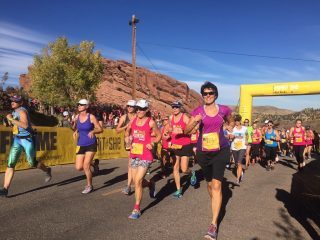
More than 2,000 women and a few men attended the inaugural Gildan Esprit de She at Red Rocks this past weekend. Photo: Allison Patillo
This past Saturday, Red Rocks Amphitheater, located just outside of Denver, Colo., was awash in a sea of pink race-day tank tops and positive energy as more than 2,000 women and a few men attended the inaugural Gildan Esprit de She at Red Rocks.
Esprit de She hosts nine other 5Ks, 10Ks, triathlons and duathlons around the country, and chose Colorado as the location for a destination event, incorporating a stunning backdrop, yoga and an intimate concert with singer and runner Jana Kramer.
“With Red Rocks specifically, we wanted a flagship event to celebrate our fourth season of Esprit de She,” says Lindsay Sachs of Life Time Fitness and founder of Esprit de She. “We’ve created a premium fitness experience where women can create memories, connect with others and make positive changes in their lives.”
At an elevation of 6,450 feet, the natural and acoustically perfect amphitheater is a bucket-list venue for musicians, as well as a killer place to get a workout. Saturday marked the first women’s-centric event in the venue’s 75-year history. Participants had the option of running the 5K or 10K road race, with pre-race Zumba to warm-up, plus join in on two yoga classes—which included partner poses, massages and dance intervals all led by Gena Caputo, founder of the Colorado School of Yoga in Boulder.
Alyssa Hill of Denver registered because of the run and girl power. “I really wanted to run a 10K,” says the 27-year old. “Red Rocks is an amazing place for a race, and I like that this is an all women’s event.”
Participants came from 35 states and three countries, including Kelsey Miller who traveled from Lubbock, Texas.
“I’ve been injured for much of the past year. This was a chance for me to get away, recharge and spend time in a magnificent place,” says Miller, 27, who attended both yoga classes. “Being outdoors, connected to nature and with so many other women is fabulous.”
The 5K began with about a mile of downhill, and climbed for the remainder of the course. 10K runners ran two loops of the 5K route, doubling their descending and climbing fun. Racers described the courses as beautiful but hard, especially as temperatures reached the upper 70’s.
“This was much harder than our normal running route,” says 51-year-old Desiree Barrett of Denver, who convinced her running group to attend. “It was a fun way to spend the day with friends, empower each other and visit lot’s of women’s-specific vendors.”
In spirit of supporting one another, members of Girls on the Run of the Rockies, the charity partner for the event, were at the finish line to hand out medals.
While the courses may have been challenging, Sachs says the goal of Esprit de She is to inspire first timers and give veteran athletes an opportunity to have fun with their friends.
“We welcome walkers, joggers and runners,” Sachs says. “This an elevated race experience tailored to women and a celebration of achievement.”
The event village, called the Lifestyle Market, even had massages, hair braiding and manicures included with race entry. It’s not often you leave a race looking and feeling better than when you arrived!
To learn more, register for 2017 and check out other events in the Esprit de She series at espritdeshe.com.
The post Rockin’ and Running at Red Rocks Amphitheater in Colorado appeared first on Competitor.com.
Pete Kostelnick Sets Historic New Record for Running Across the U.S.
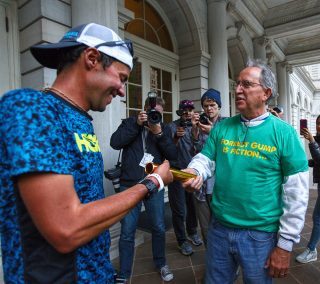
Previous record-holder Frank Giannino Jr. helped hold the finish-line banner at New York City Hall. After Pete Kostelnick ran through it, Giannino presented a gold baton to him, a symbolic passing of the record. Photo: Courtesy of Hoka One One, Justin Britton
When Pete Kostelnick set out from San Francisco on Sept. 12, his goal was to break a record that had withstood every challenge for 36 years.
To do it, he hoped to run at least 70 miles a day for more than two months to New York City, a feat of physical and mental endurance that some believed was nearly impossible.
But on Monday, Oct. 24, Kostelnick not only broke the record, he crushed it by roughly 4 days.
Kostelnick, 29, jogged onto the steps of New York City Hall late Monday afternoon in 42 days, 6 hours and 30 minutes, beating the mark of 46 days, eight hours and 36 minutes set in 1980 by Frank Giannino Jr. For the new record Kostelnick averaged just over 72 miles per day, covering a total of 3,067 miles.
Accompanied by a small group of runners who escorted him through the streets of Manhattan, Kostelnick looked almost fresh in his bright blue shirt, sunglasses and backward baseball cap as he finished off an 87-mile last leg that began at midnight. He finished his run at City Hall, the same location where Giannino finished his run decades ago.
After climbing the steps, accompanied by his wife, Nikki, they shared a kiss and a long, emotional hug.
“I am not running back!” Kostelnick said to those who had gathered.
“I think it was more mentally and emotionally challenging then physical,” he added. “Everyone who came out was incredible. That’s what got me through this run, meeting so many awesome people across this country. I couldn’t have done it without them … It was an incredible journey.”
Giannino, who was there to see the record-breaking finish among a crowd of Kostelnick’s family, friends and runners, had known for weeks that his record would fall.
“He’s at the top of his game,” Giannino said on Monday. “He has this thing completely measured.”
Giannino, in fact, helped hold the finish-line banner. After Kostelnick ran through it, he presented a gold baton to him, a symbolic passing of the record.
“Congratulations, brother!” Giannino said as he handed it over.
The run didn’t start out smooth for Kostelnick, a financial planner originally from Iowa. After six days, he needed to take a rest day because of problems with his ankles and shin. But after that, Kostelnick got back on the road and kept churning. As time went on, he said he felt stronger and stronger.
Five years ago, Kostelnick first started thinking about going after the record when he met standout ultra runner Marshall Ulrich at a race in Colorado and they talked about Ulrich’s cross-country run. Kostelnick said recently that he knew he wasn’t ready to attempt it then, but he kept the idea in the back of his mind.
This year—after winning the Badwater Ultramarathon for a second straight year—he felt he was ready.
Ulrich didn’t know who Kostelnick was when he first met him. “I didn’t know him from Adam,” Ulrich said—but he followed his running progress with interest the last couple of years.
Now Ulrich, who ran across the U.S. himself in 52 days back in 2008 at the age of 57, says it’s hard to explain how amazing Kostelnick’s feat is.
“I’m in awe of it,” he said. “It almost makes me speechless.”
The fact Kostelnick chose to run essentially the same route that Giannino had run in 1980 is also impressive. Ulrich explained that route is longer and more difficult—because of crossings through the Sierra and Rockies—than a more southerly route.
Ulrich also said he thought someone might come along to beat Giannino’s record, but he never believed anyone could shatter it the way Kostelnick did.
“I’ll tell you what, this is probably, at least in my book, the most significant running feat that has taken place in probably the last three decades,” he said. “The combination of physical and mental challenges to run more than 3,000 miles is a high hurdle.
“The big question was: Did he have the mental prowess overall? And he’s proven over and over that he does,” Ulrich said.
Nikki Kostelnick hadn’t seen her husband since August. But she was there to greet him at City Hall on Monday. She’d stay in contact with him, making phone calls along the way, but it was hard to connect because of Kostelnick’s running and sleeping schedule.
Just before Kostelnick finished, she said Pete had been feeling “pretty rough” and “ready to be done.” But she said she always knew he could break the record once he started.
“Once he gets into his rhythm, he has no problems,” she said.
At the moment, Nikki says her husband is not going to be running anywhere for a while. “I’m going to force him to rest,” she said. “He needs to take at least a month off.”
The post Pete Kostelnick Sets Historic New Record for Running Across the U.S. appeared first on Competitor.com.
Fuel or Treat: 7 Fuel Items that Could Pass as Halloween Candy
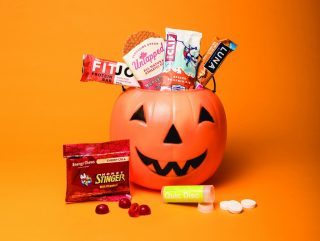
Fuel products these days can be so on point with flavor that it’s hard to believe they’re not candy and actually provide necessary on-the-run nutrients. On this year’s trick or treat route, swap your favorite sugary sweets for these seasonally themed bars and chews.
Photos: Oliver Baker
Photo Gallery
1 of {count}
Back to Start
View Larger Image
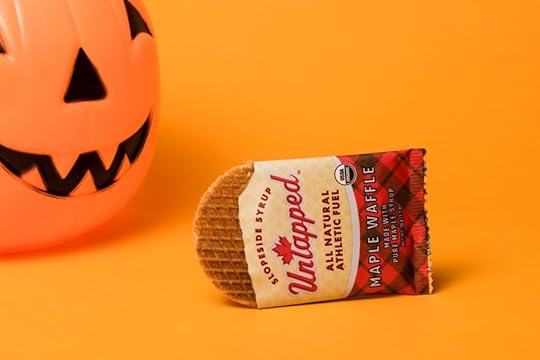
UnTapped Maple Waffle, $19.95 for 8-pack
Because this Dutch-inspired stroopwafel is sweetened with real maple syrup, it contains essential amino acids and more than 50 antioxidants that help with recovery. It also tastes like a plate of waffles doused in syrup and pairs well with coffee.
View Larger Image

Honey Stinger Organic Energy Chews Cherry Cola, $27 for 12-pack
Instead of getting your sugar fix from the typical gelatin gummy, try Honey Stinger’s new Cherry Cola flavor. These chews are gluten-free, sweetened with organic honey and caffeinated. They’re also a good vitamin substitute, containing 100 percent of the recommended daily value of vitamin C.
View Larger Image
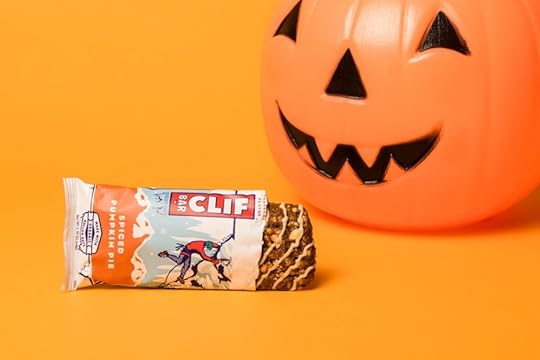
Clif Bar Spiced Pumpkin Pie, $17.88 for 12-pack
It’s never too soon for pumpkin-flavored food. Clif Bar’s seasonal Pumpkin Pie flavor is made of organic oats and raisins spiced with cinnamon, nutmeg, ginger, cloves and vanilla extract that give it a “like-the-real-thing” taste. It’s also packed with 240 calories to sustain energy for the long run.
View Larger Image

Quic Disc Simply Carbs Lemon-Lime, $21 for 12-tube case
Even Quic Disc describes these chewable energy tablets as “similar in taste to a SweetTart candy—just not quite as tart.” They’ll also give you a different kind of sugar rush—one that contains 16 grams of carbs, plus electrolytes.
View Larger Image
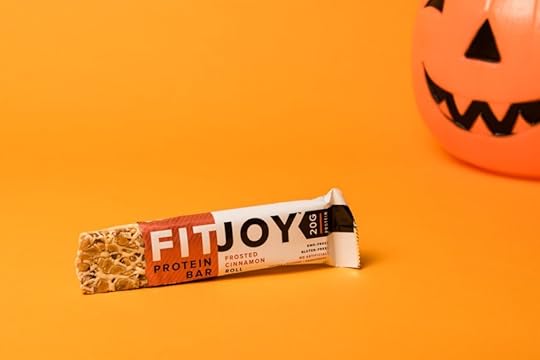
FitJoy Protein Bar Frosted Cinnamon Roll, $28 for 12-pack
With only 3 grams of sugar, this 20-gram protein bar is surprisingly as sweet and tasty as a Cinnabon (but packing 800 fewer calories). It’s also gluten-free, and with no artificial colors or sweeteners, which makes it a guilt-free post-run treat.
View Larger Image
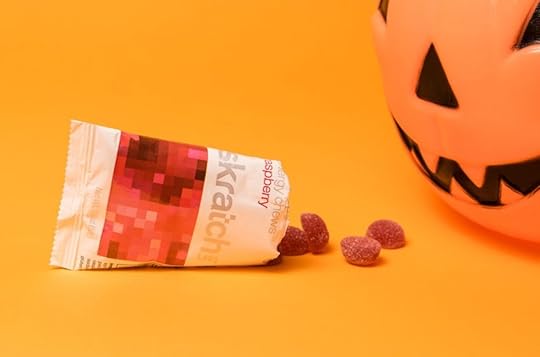
Skratch Labs Fruit Drops Raspberry, $19.60 for 10-pack
These Fruit Drops from Skratch Labs are actually inspired by the candy gumdrop recipe, except they're much healthier for you. Flavored with real fruit, these energy chews contain only 80 calories per serving and essential electrolytes, and help maintain blood sugar and performance during prolonged exercise.
View Larger Image

Luna Bar Peanut Butter Dark Chocolate Chunk, $16.68 for 12-pack
Consider this a more decadent and nutritious version of a Butterfinger. It may not have the same crunchiness, but its organic creamy
peanut butter with dark chocolate chunks will make you forget it only has 5 grams of sugar.

More Galleries
The post Fuel or Treat: 7 Fuel Items that Could Pass as Halloween Candy appeared first on Competitor.com.
Gear We Love: October 2016
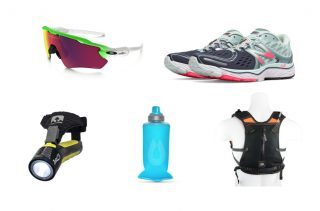
This month’s gear picks from our editors include all the must-have fall essentials from evening visibility needs to efficient fuel solutions to fast and cushioned kicks.
Photo Gallery
1 of {count}
Back to Start
View Larger Image
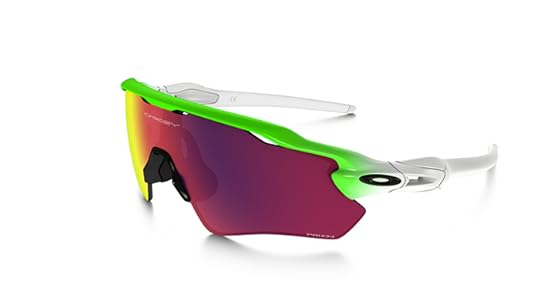
Oakley Radar EV Path Prizm Road Green Fade Edition, $210
The moment I saw these swanky new shades, I immediately thought back to the old-school Oakleys of the 1990s. There is an edgy retro look and feel to this pair, but it's the modern Prizm lens technology that helps enhance vision in both bright lights and shadows that makes these special. When running on the roads or trails, the intricacies of the surface are well-definied in just about any light. As for the design, well, yes, they're a bit intense, but that's a good thing. They inspire speed—or at least I don't want to go out for a slow jog with these bad boys on my face. With sunglasses, I always say the best test of their performance, feel and fit is when you don't notice them. The other evening while running into a glaring sunset during a 7-mile tempo run someone said, "Good call on bringing shades," but I only realized later I was the only one wearing sunglasses and he was talking to me. Spending $200 is a lot for a pair of sunglasses, but you definitely get what you pay for here—including the retro vibe. —Brian Metzler, editor-in-chief
View Larger Image
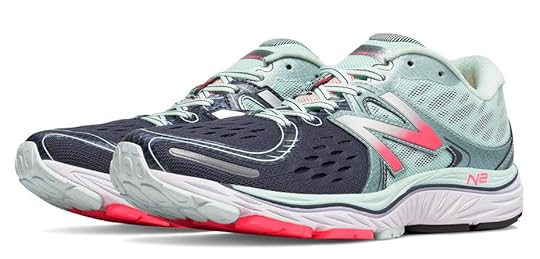
New Balance 1260v6, $150
I don't normally wear New Balance shoes until I tested this pair out for our annual Holiday Gift Guide. After a few runs, I became a believer and made these a part of my regular rotation. The 1260v6 has a T-Beam support in the midfoot that helps with stability and absorbs some of the shock from impact. I was skeptical that the T-Beam would be too hard on my arch, but found that it was barely noticeable and made my ride much smoother. These shoes are a great option for distance running due to ample, lightweight cushioning that doesn't sacrifice sleek design—a clear win-win in my book. —Emily Polachek, associate editor
View Larger Image

Orange Mud Endurance Pack, $135
Orange Mud is an upstart company that has been creating hydration solutions for endurance athletes for a few years now. After years of making smart bottle-carrying packs, the Endurance Pack is its first pack with a reservoir. It comes with a 2 liter (or 70 oz.). I like this pack because it fits great and is super functional for all types of endurance sports. HydraPak Elite bladder that's built with quick disconnect fittings and a high-flow bite valve. It has room for more than 6 liters of storage (thanks to a spacious zippered pouch and lash cords on the back) and it weighs only 9.5 oz. empty. Best of all it's made from lightweight but durable fabrics that help wick moisture away from the body, so you're not one soggy mess wearing it out on a hot trail run or mountain bike ride. It has front pockets that can hold a pair of 18 to 20 oz. soft flasks (sold separately) and it has two unique front bottom-access pouches designed for a cell phone or gels. (A Velcro strap over the bottom of the pouch allows much easier access to its contents on the run.) —Brian Metzler, editor-in-chief
View Larger Image

Nathan Sports Zephyr Fire 100 Hand Torch LED Light, $50
Thanks to Daylight Savings lasting so long, this is the time of year when mornings get really dark. After narrowly avoiding getting run over by a sleepy driver recently, I decided to take along a flashlight on these pre-dawn runs. I'm not the headlamp type, and so this Nathan handheld has been great. The ergonomic strap means you can just let it hang—no need to grip tight—and a bright headlight and blinking red taillight provide plenty of see-and-be-seen ability. There's even a strobe mode for the front light if you really wanna get noticed. —Adam Elder, managing editor
View Larger Image
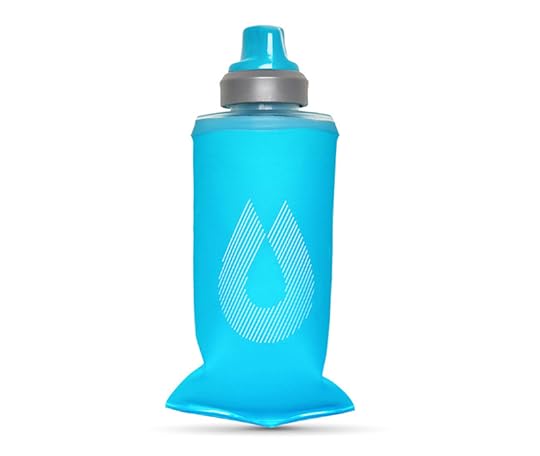
HydraPak Soft Flask, $13
When going for a long run, it can be a hassle to carry multiple gel packs. You only have so many pockets and/or belts that are already toting your phone, cards/cash, energy drinks, bars/chews, etc. Plus, if you're the environmentally-conscious type like me that tries to minimize waste whenever I can, then this 150ml (or 5.1 oz.) collapsible, reusable soft gel flask is the perfect solution. Simply fill it up with your favorite energy gel (bought in bulk) and never worry about where to dispose/stash your used sticky gel packets. It's surprisingly easy to clean, just rinse and stick it in the dishwasher. Other than gels it can also be used for electrolyte mixes, water or whatever liquid fuel method you prefer. Plus, it's lightweight, versatile and easy to carry for the minimalist runner. —Emily Polachek, associate editor
View Larger Image

Saucony Xodus ISO, $130
Because I test a lot of running shoes every year—easily 75 models or more—I only get a chance to run in a handful of shoes I really like. That's both a good thing and a bad thing. It's a good thing because, well, I can run a lot in the shoes I like. It's a bad thing because I also have to run in shoes I don't really like. That said, one model I have liked and have been running in a lot since April is the Saucony Xodus ISO trail running shoe. It's just about everything you'd want in a trail running shoe and it's surprisingly versatile when it comes to different types of terrain. It's pretty light (or light enough) for a shoe with such an aggressive tread, but it's also agile. The fit is amazing (and the stretchy mesh material in the forefoot is a big part of that) and the ride is buttery soft, thanks to the new EverRun foam under the foot. It has just enough protection for rugged mountain trails, but the best part about it is that it runs well on just about everything else, including dirt trails, gravel roads, paved/concrete surfaces and even wet grassy terrain. (There's also a water-resistant Xodus ISO RunShield version coming out this fall.) If you're looking for one do-it-all pair of shoes to get you through the fall and winter, this is a good one to consider. —Brian Metzler, editor-in-chief
View Larger Image
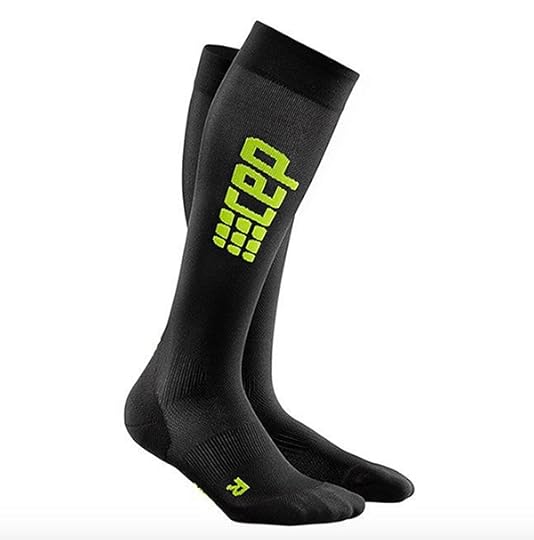
CEP Ultralight Run+ Compression Socks, $60
Not everyone is convinced that compression gear benefits runners—different studies have reached seriously divergent conclusions. But when my calf muscles recently started feeling unusually sore and tender I decided to give the CEP Ultralight Run+ Compression Socks a try. The foot portion wears like a regular running sock, albeit a very thin and unobtrusive one. The upper portion of this model extended to just below my knees (CEP also makes mid-calf and shorter models). My muscles warmed up more quickly than with normal socks and I enjoyed the way they cradled my lower legs. CEP claims that their experience making medical-grade compression gear helps them produce effective products for athletes. My leg soreness has eased, and though I can’t say what role these socks played in that, I suspect I’ll reach for them again if it creeps back. —Mark Eller, contributing editor
Related Galleries
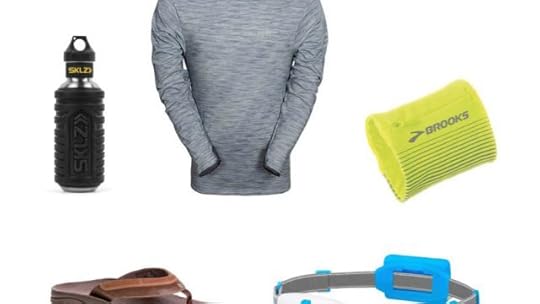
Gear We Love: September 2016
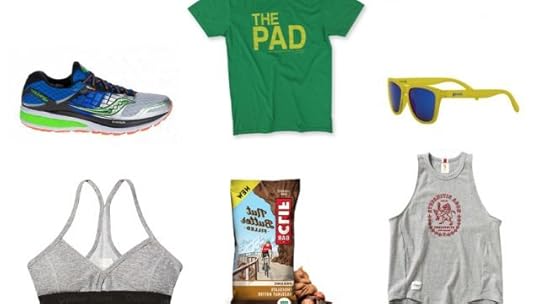
Gear We Love: August 2016
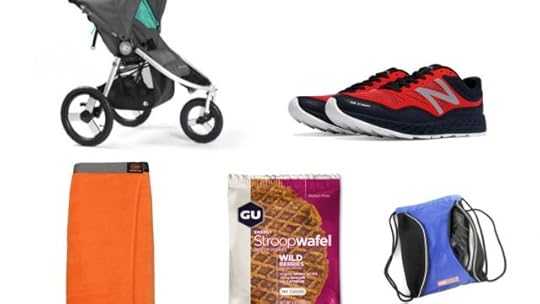
Gear We Love: July 2016

Gear We Love: June 2016

More Galleries
The post Gear We Love: October 2016 appeared first on Competitor.com.
Ryan Hall's Blog
- Ryan Hall's profile
- 21 followers



